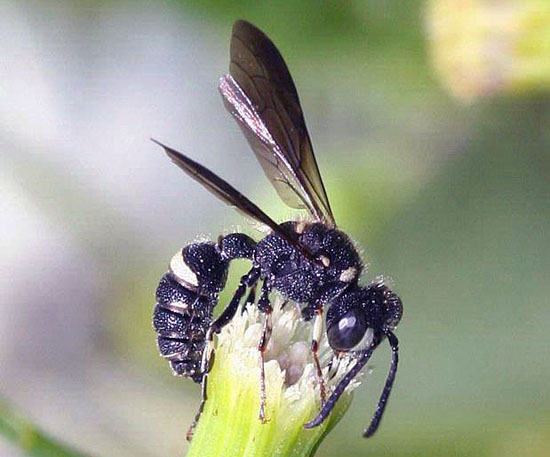Issue 5, May 23, 2011
CIA (Cerceris Identification and Awareness) for EAB
The Morton Arboretum is cooperating with the US Forest Service to explore the feasibility of using a native, non-stinging, ground-nesting wasp, Cerceris fumipennis, to locate emerald ash borer infestations.

The prevalence and location of these wasp colonies are not known, and we need help locating them. Cerceris colonies are often found in packed sand soils. Ballfields, other athletic fields, sandy driveways, parking lots and even fire rings are likely locations. Therefore, we are asking for assistance from forest preserve districts, park districts and other land managers in watching for signs of wasp activity or nests this summer.
Should we be successful in locating wasp colonies, we would like to collaborate to develop a citizen science project to monitor for EAB in 2012. More information about this follows.
One of the many challenges to managing Emerald Ash Borer (EAB) is detecting infestations early enough to take action to protect ash trees. A new tool for EAB monitoring is called bio-surveillance. Following the activity of a small wasp, Cerceris fumipennis, can potentially help us find EAB. It looks like a common wasp, but does not sting. If the Cerceris wasp is found bringing EAB back to their nests for dinner, we know EAB is in the area. Pilot bio-surveillance programs are taking place in Canada and the East Coast. The Morton Arboretum is collaborating with the US Forest Service to begin such a project in Illinois and needs your help.
The first step is to locate colonies of these ground nesting wasps. They are commonly found in open areas of hard-packed sandy soil with ash trees nearby. Athletic fields, such as ball diamonds, volleyball courts, horse shoe pits, and even parking lots, especially if they are not well maintained, are ideal locations.
To help us locate Cerceris fumipennis, colonies, we simply need park maintenance staff to watch ball fields for signs of ground-nesting wasp activity or nests. The nests are marked by pencil-diameter holes on top of little mounds of sand. They are most active during the summer months.
Should colonies of Cerceris fumipennis be suspected:
- Cooperating land managers would contact the Morton Arboretum.
- Morton Arboretum staff will visit the site and evaluate insect activity.
- If colonies are active, interested land managers would be invited to participate in a "citizen science" project in 2012 that could involve kids, educators and community leaders wanting to help protect trees.
For more information contact: Edith Makra, Community Trees Advocate, The Morton Arboretum, 630-719-2425 or emakra@mortonarb.org or visit http://www.cerceris.info/index.html (Phil Nixon, slightly modified from The Morton Arboretum)
Author:
Phil Nixon